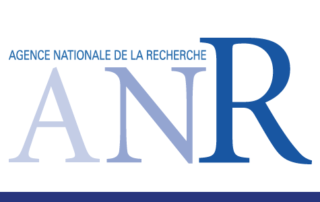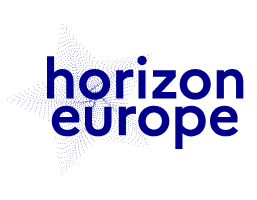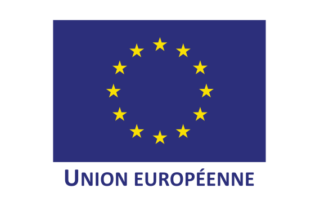Looking for Assistance with Analyzing and Interpreting Your Data?
AltraBio is a contract research company specializing in the analysis of biological and medical data using statistical methods and artificial intelligence.
Trusted Globally: AltraBio serves as a research and development partner for leading companies and university hospitals across pharmaceuticals, medical devices, diagnostics, and dermo-cosmetics sectors.
How Can We Work Together?
Partnership
Development of computational tools for data analysis in regional, national, and international consortia.
Examples of Current and Completed Projects:
Subcontracting
Data analysis for companies and university hospitals.
-
Hundreds of completed projects.
-
Regular customers include top 10 pharmaceutical companies and leaders in cosmetics.
Funding





News
March 2025
High-Dose Flu Vaccine Enhances Elderly Immunity
High-Dose Flu Vaccine Enhances Elderly Immunity: Study in JCI [...]
January 2025
Skin Science Days
🚀 AltraBio is excited to participate in the Skin [...]
December 2024
27th congress of the French Society of Cytometry
🚀 AltraBio is excited to announce our participation in [...]
November 2024
AltraBio is thrilled to announce its participation in the I4ID Congress 2024
🚀 AltraBio is thrilled to announce its participation in [...]
Latest Publications
2016
Brinza, Lilia; Djebali, Sophia; Tomkowiak, Martine; Mafille, Julien; Loiseau, Céline; Jouve, Pierre-Emmanuel; Bernard, Simon; Buffat, Laurent; Lina, Bruno; Ottmann, Mich`ele; Rosa-Calatrava, Manuel; Schicklin, Stéphane; Bonnefoy, Nathalie; Lauvau, Grégoire; Grau, Morgan; Wencker, Mélanie; Arpin, Christophe; Walzer, Thierry; Leverrier, Yann; Marvel, Jacqueline
Immune signatures of protective spleen memory CD8 T cells Journal Article
In: Sci. Rep., vol. 6, pp. 37651, 2016.
@article{Brinza2016-gb,
title = {Immune signatures of protective spleen memory CD8 T cells},
author = {Lilia Brinza and Sophia Djebali and Martine Tomkowiak and Julien Mafille and Céline Loiseau and Pierre-Emmanuel Jouve and Simon Bernard and Laurent Buffat and Bruno Lina and Mich`ele Ottmann and Manuel Rosa-Calatrava and Stéphane Schicklin and Nathalie Bonnefoy and Grégoire Lauvau and Morgan Grau and Mélanie Wencker and Christophe Arpin and Thierry Walzer and Yann Leverrier and Jacqueline Marvel},
doi = {10.1038/srep37651},
year = {2016},
date = {2016-11-01},
urldate = {2016-11-01},
journal = {Sci. Rep.},
volume = {6},
pages = {37651},
abstract = {Memory CD8 T lymphocyte populations are remarkably heterogeneous
and differ in their ability to protect the host. In order to
identify the whole range of qualities uniquely associated with
protective memory cells we compared the gene expression
signatures of two qualities of memory CD8 T cells sharing the
same antigenic-specificity: protective (Influenza-induced,
Flu-TM) and non-protective (peptide-induced, TIM) spleen memory
CD8 T cells. Although Flu-TM and TIM express classical phenotypic
memory markers and are polyfunctional, only Flu-TM protects
against a lethal viral challenge. Protective memory CD8 T cells
express a unique set of genes involved in migration and survival
that correlate with their unique capacity to rapidly migrate
within the infected lung parenchyma in response to influenza
infection. We also enlighten a new set of poised genes expressed
by protective cells that is strongly enriched in cytokines and
chemokines such as Ccl1, Ccl9 and Gm-csf. CCL1 and GM-CSF genes
are also poised in human memory CD8 T cells. These immune
signatures are also induced by two other pathogens (vaccinia
virus and Listeria monocytogenes). The immune signatures
associated with immune protection were identified on circulating
cells, i.e. those that are easily accessible for
immuno-monitoring and could help predict vaccines efficacy.},
keywords = {},
pubstate = {published},
tppubtype = {article}
}
and differ in their ability to protect the host. In order to
identify the whole range of qualities uniquely associated with
protective memory cells we compared the gene expression
signatures of two qualities of memory CD8 T cells sharing the
same antigenic-specificity: protective (Influenza-induced,
Flu-TM) and non-protective (peptide-induced, TIM) spleen memory
CD8 T cells. Although Flu-TM and TIM express classical phenotypic
memory markers and are polyfunctional, only Flu-TM protects
against a lethal viral challenge. Protective memory CD8 T cells
express a unique set of genes involved in migration and survival
that correlate with their unique capacity to rapidly migrate
within the infected lung parenchyma in response to influenza
infection. We also enlighten a new set of poised genes expressed
by protective cells that is strongly enriched in cytokines and
chemokines such as Ccl1, Ccl9 and Gm-csf. CCL1 and GM-CSF genes
are also poised in human memory CD8 T cells. These immune
signatures are also induced by two other pathogens (vaccinia
virus and Listeria monocytogenes). The immune signatures
associated with immune protection were identified on circulating
cells, i.e. those that are easily accessible for
immuno-monitoring and could help predict vaccines efficacy.
Bachy, Emmanuel; Urb, Mirjam; Chandra, Shilpi; Robinot, Rémy; Bricard, Gabriel; de Bernard, Simon; Traverse-Glehen, Alexandra; Gazzo, Sophie; Blond, Olivier; Khurana, Archana; Baseggio, Lucile; Heavican, Tayla; Ffrench, Martine; Crispatzu, Giuliano; Mondière, Paul; Schrader, Alexandra; Taillardet, Morgan; Thaunat, Olivier; Martin, Nadine; Dalle, Stéphane; Garff-Tavernier, Magali Le; Salles, Gilles; Lachuer, Joel; Hermine, Olivier; Asnafi, Vahid; Roussel, Mikael; Lamy, Thierry; Herling, Marco; Iqbal, Javeed; Buffat, Laurent; Marche, Patrice N; Gaulard, Philippe; Kronenberg, Mitchell; Defrance, Thierry; Genestier, Laurent
CD1d-restricted peripheral T cell lymphoma in mice and humans Journal Article
In: J Exp Med, vol. 213, no. 5, pp. 841–857, 2016, ISSN: 1540-9538.
@article{pmid27069116,
title = {CD1d-restricted peripheral T cell lymphoma in mice and humans},
author = {Emmanuel Bachy and Mirjam Urb and Shilpi Chandra and Rémy Robinot and Gabriel Bricard and Simon de Bernard and Alexandra Traverse-Glehen and Sophie Gazzo and Olivier Blond and Archana Khurana and Lucile Baseggio and Tayla Heavican and Martine Ffrench and Giuliano Crispatzu and Paul Mondière and Alexandra Schrader and Morgan Taillardet and Olivier Thaunat and Nadine Martin and Stéphane Dalle and Magali Le Garff-Tavernier and Gilles Salles and Joel Lachuer and Olivier Hermine and Vahid Asnafi and Mikael Roussel and Thierry Lamy and Marco Herling and Javeed Iqbal and Laurent Buffat and Patrice N Marche and Philippe Gaulard and Mitchell Kronenberg and Thierry Defrance and Laurent Genestier},
doi = {10.1084/jem.20150794},
issn = {1540-9538},
year = {2016},
date = {2016-05-01},
urldate = {2016-05-01},
journal = {J Exp Med},
volume = {213},
number = {5},
pages = {841--857},
abstract = {Peripheral T cell lymphomas (PTCLs) are a heterogeneous entity of neoplasms with poor prognosis, lack of effective therapies, and a largely unknown pathophysiology. Identifying the mechanism of lymphomagenesis and cell-of-origin from which PTCLs arise is crucial for the development of efficient treatment strategies. In addition to the well-described thymic lymphomas, we found that p53-deficient mice also developed mature PTCLs that did not originate from conventional T cells but from CD1d-restricted NKT cells. PTCLs showed phenotypic features of activated NKT cells, such as PD-1 up-regulation and loss of NK1.1 expression. Injections of heat-killed Streptococcus pneumonia, known to express glycolipid antigens activating NKT cells, increased the incidence of these PTCLs, whereas Escherichia coli injection did not. Gene expression profile analyses indicated a significant down-regulation of genes in the TCR signaling pathway in PTCL, a common feature of chronically activated T cells. Targeting TCR signaling pathway in lymphoma cells, either with cyclosporine A or anti-CD1d blocking antibody, prolonged mice survival. Importantly, we identified human CD1d-restricted lymphoma cells within Vδ1 TCR-expressing PTCL. These results define a new subtype of PTCL and pave the way for the development of blocking anti-CD1d antibody for therapeutic purposes in humans.},
keywords = {},
pubstate = {published},
tppubtype = {article}
}
Bachy, Emmanuel; Urb, Mirjam; Chandra, Shilpi; Robinot, Rémy; Bricard, Gabriel; Bernard, Simon; Traverse-Glehen, Alexandra; Gazzo, Sophie; Blond, Olivier; Khurana, Archana; Baseggio, Lucile; Heavican, Tayla; Ffrench, Martine; Crispatzu, Giuliano; Mondi`ere, Paul; Schrader, Alexandra; Taillardet, Morgan; Thaunat, Olivier; Martin, Nadine; Dalle, Stéphane; Garff-Tavernier, Magali Le; Salles, Gilles; Lachuer, Joel; Hermine, Olivier; Asnafi, Vahid; Roussel, Mikael; Lamy, Thierry; Herling, Marco; Iqbal, Javeed; Buffat, Laurent; Marche, Patrice N; Gaulard, Philippe; Kronenberg, Mitchell; Defrance, Thierry; Genestier, Laurent
CD1d-restricted peripheral T cell lymphoma in mice and humans Journal Article
In: J. Exp. Med., vol. 213, no. 5, pp. 841–857, 2016.
@article{Bachy2016-jl,
title = {CD1d-restricted peripheral T cell lymphoma in mice and humans},
author = {Emmanuel Bachy and Mirjam Urb and Shilpi Chandra and Rémy Robinot and Gabriel Bricard and Simon Bernard and Alexandra Traverse-Glehen and Sophie Gazzo and Olivier Blond and Archana Khurana and Lucile Baseggio and Tayla Heavican and Martine Ffrench and Giuliano Crispatzu and Paul Mondi`ere and Alexandra Schrader and Morgan Taillardet and Olivier Thaunat and Nadine Martin and Stéphane Dalle and Magali Le Garff-Tavernier and Gilles Salles and Joel Lachuer and Olivier Hermine and Vahid Asnafi and Mikael Roussel and Thierry Lamy and Marco Herling and Javeed Iqbal and Laurent Buffat and Patrice N Marche and Philippe Gaulard and Mitchell Kronenberg and Thierry Defrance and Laurent Genestier},
doi = {10.1084/jem.20150794},
year = {2016},
date = {2016-05-01},
urldate = {2016-05-01},
journal = {J. Exp. Med.},
volume = {213},
number = {5},
pages = {841--857},
abstract = {Peripheral T cell lymphomas (PTCLs) are a heterogeneous entity of
neoplasms with poor prognosis, lack of effective therapies, and a
largely unknown pathophysiology. Identifying the mechanism of
lymphomagenesis and cell-of-origin from which PTCLs arise is
crucial for the development of efficient treatment strategies. In
addition to the well-described thymic lymphomas, we found that
p53-deficient mice also developed mature PTCLs that did not
originate from conventional T cells but from CD1d-restricted NKT
cells. PTCLs showed phenotypic features of activated NKT cells,
such as PD-1 up-regulation and loss of NK1.1 expression.
Injections of heat-killed Streptococcus pneumonia, known to
express glycolipid antigens activating NKT cells, increased the
incidence of these PTCLs, whereas Escherichia coli injection did
not. Gene expression profile analyses indicated a significant
down-regulation of genes in the TCR signaling pathway in PTCL, a
common feature of chronically activated T cells. Targeting TCR
signaling pathway in lymphoma cells, either with cyclosporine A
or anti-CD1d blocking antibody, prolonged mice survival.
Importantly, we identified human CD1d-restricted lymphoma cells
within V$delta$1 TCR-expressing PTCL. These results define a new
subtype of PTCL and pave the way for the development of blocking
anti-CD1d antibody for therapeutic purposes in humans.},
keywords = {},
pubstate = {published},
tppubtype = {article}
}
neoplasms with poor prognosis, lack of effective therapies, and a
largely unknown pathophysiology. Identifying the mechanism of
lymphomagenesis and cell-of-origin from which PTCLs arise is
crucial for the development of efficient treatment strategies. In
addition to the well-described thymic lymphomas, we found that
p53-deficient mice also developed mature PTCLs that did not
originate from conventional T cells but from CD1d-restricted NKT
cells. PTCLs showed phenotypic features of activated NKT cells,
such as PD-1 up-regulation and loss of NK1.1 expression.
Injections of heat-killed Streptococcus pneumonia, known to
express glycolipid antigens activating NKT cells, increased the
incidence of these PTCLs, whereas Escherichia coli injection did
not. Gene expression profile analyses indicated a significant
down-regulation of genes in the TCR signaling pathway in PTCL, a
common feature of chronically activated T cells. Targeting TCR
signaling pathway in lymphoma cells, either with cyclosporine A
or anti-CD1d blocking antibody, prolonged mice survival.
Importantly, we identified human CD1d-restricted lymphoma cells
within V$delta$1 TCR-expressing PTCL. These results define a new
subtype of PTCL and pave the way for the development of blocking
anti-CD1d antibody for therapeutic purposes in humans.
